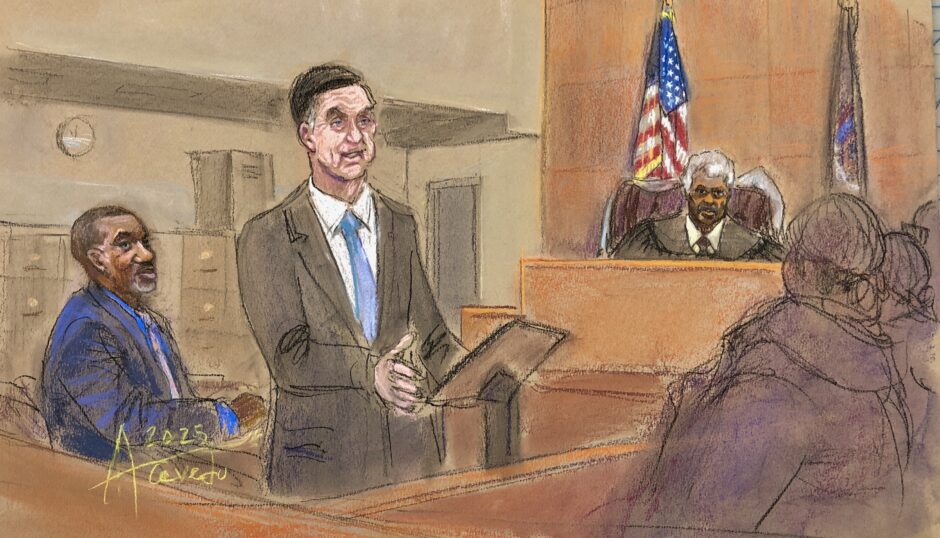DOWNTOWN BROOKLYN — In this courtroom sketch, Hon. Desmond Green listens as the plaintiff’s attorney, Edward Nitkewicz (standing), of the law firm Salenger, Sack, Kimmel & Bavaro, addresses the jury during opening remarks in the slip-and-fall lawsuit Bennett v. New York City Transit Authority. Wayne Glasgow (at left) of the NYCTA Law Department represented the defendant.
In March of 2019, Sandra Bennett, then 50 years old, was on her way to her IT job in downtown Manhattan. Her rush hour commute included a ride on the Franklin Avenue shuttle, a two-car train that travels in a loop across four Brooklyn subway stations. Bennett claims that she was injured when she encountered a slippery spot on the floor of the shuttle and fell.
Nitkewicz called an NYCTA employee to the stand, who had been on assignment at the time of the incident but was not a named defendant, to describe his responsibilities as a shuttle car cleaner. Nitkewicz elicited an account of wet-mopping as needed, cleaning materials used and the approximately 5-10 minutes to address and resolve maintenance in a paused car at its terminus.
Bennett testified during direct examination that she was making her way to an empty seat when she “went sliding … on a shiny, greasy spot” and fell, and had to be helped up into the seat when she could not do so on her own. Bennett maintained that she continued on to her destination but returned a few minutes later to address the incident and take evidentiary pictures.
Glasgow sought to impugn Bennett by citing inconsistencies and/or omissions in her testimony, for instance, regarding the order of events, being on her cellphone or recalling the weather conditions. Glasgow challenged that the pictures in evidence showed little more than a photographic glare.
Nitkewicz asserted in summation that the NYCTA was negligent in being responsible for creating a dangerous condition when they failed to dry-mop the residue left by their cleaning maintenance. The jury however delivered a verdict for the defendant. When they were asked on the verdict sheet whether there was a greasy substance on the floor of the shuttle train, they replied “No,” in the trial that ended recently in Kings County Supreme, Civil Term.
Sketches of Court is an occasional feature that focuses on a random trial in Kings County Supreme, Civil Term. In the aggregate, it is an appreciation of the work of the courthouse community for the Brooklyn community at large.

